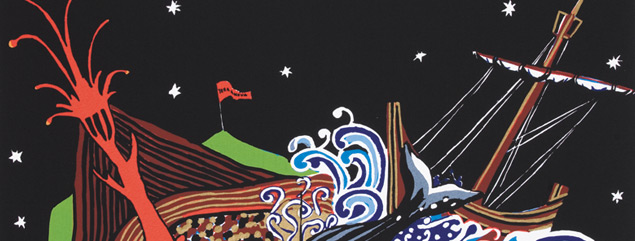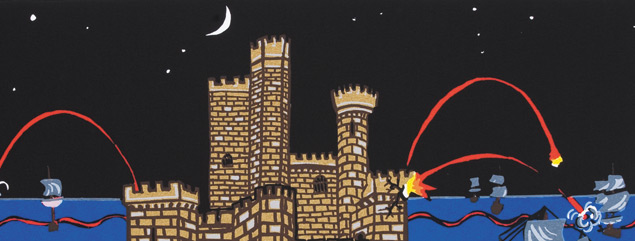Text by Rosa Queralt
She releases the imaginary again for illustration purposes
when she is asked by a publisher to put accompanying pictures to two chosen fragments of the work of Linguist and philosopher Wilhelm von Humboldt (Postdam,1767–Tegel, Berlin, 1835): Journey to the country of the Basques. The first journey accompanied by his wife and children, started in 1799 and lasted until April 1800. His natural inclination in the study of languages was founded in the observation of the character and soul of the people, which led him to return a year later to “hear the lively voices of the people”. From these two visits he developed the theory that the Basque language was “one of the most perfectly formed languages, surprising in its vigour, its word structure and the succinct boldness of expression” apart form considering it the oldest language in Europe.
One of the stories Idoia chose deals with the hypothesis that Basque whalers arrived in America a century before Columbus, settling in Newfoundland, returning home however, after a year because of the intolerable climate. The second story refers to the path that leads up to the castle of Mount Urgul, and how a group taking this route celebrated and complemented the views of San Sebastián and the surrounding area. Through the screen prints the artist uses to illustrate both texts, she could pass through the less constrained domains of the imagery associating them respectively with the iconography of the volcanoes and the centre of the earth that she would have seen in her school science and nature books and with the repeated trips she made as a child up Mount Urgul. This is how she related the story of Humboldt and the travellers of the 18th and 19th centuries impelled to the adventure of discovering new worlds and cultures.

